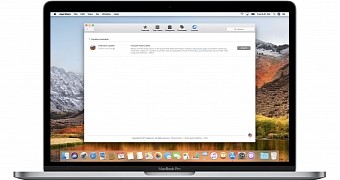Coming hot on the heels of the first iOS 11.2 and tvOS 11.2 public betas, Apple's upcoming macOS High Sierra 10.13.2 operating system is now ready for public testing too.
macOS 10.13.2 is Apple's second maintenance update for the High Sierra operating system, and it entered development earlier this week when Apple surprised us all when it seeded the first developer beta to registered devs through its Apple Developer website.
Now public beta testers a.k.a. regular users that aren't developers or don't have a paid Apple Developer account can download and install the update on their Macs through the Apple Beta Software Program for macOS, iOS, and tvOS.
The macOS High Sierra 10.13.2 update should, as usual, improve the overall stability, reliability, and security of your Mac, though it is believed that it could also bring some promised features like Apple Pay Cash and iMessages in iCloud.
Here's how to install the macOS High Sierra 10.13.2 Public Beta
To install the macOS High Sierra 10.13.2 public beta on your Mac, you'll need to go to Apple's Beta Software Program website, enroll your Mac by downloading the macOS Developer Beta Access Utility, which will give you access to the installer.
With the macOS Developer Beta Access Utility installed, you can open Mac App Store application and install the macOS High Sierra 10.13.2 public beta update from the Updates pane. When new beta releases are out, you'll automatically get the update.
macOS High Sierra 10.13.2 public beta is supported on all MacBook or iMac computers Late 2009 or newer, as well as all MacBook Air, MacBook Pro, Mac mini, and Mac Pro computers released after 2010. However, make sure you have a recent backup of your files before installing the update.
Apple also released a few days ago the first stability and security update of High Sierra, macOS 10.13.1, which is recommended to all Mac users because it patched that critical WPA2 KRACK (Key Reinstallation Attack) vulnerability that puts all devices that connect to the Internet using the WPA2 protocol at risk of being hacked.

 14 DAY TRIAL //
14 DAY TRIAL //